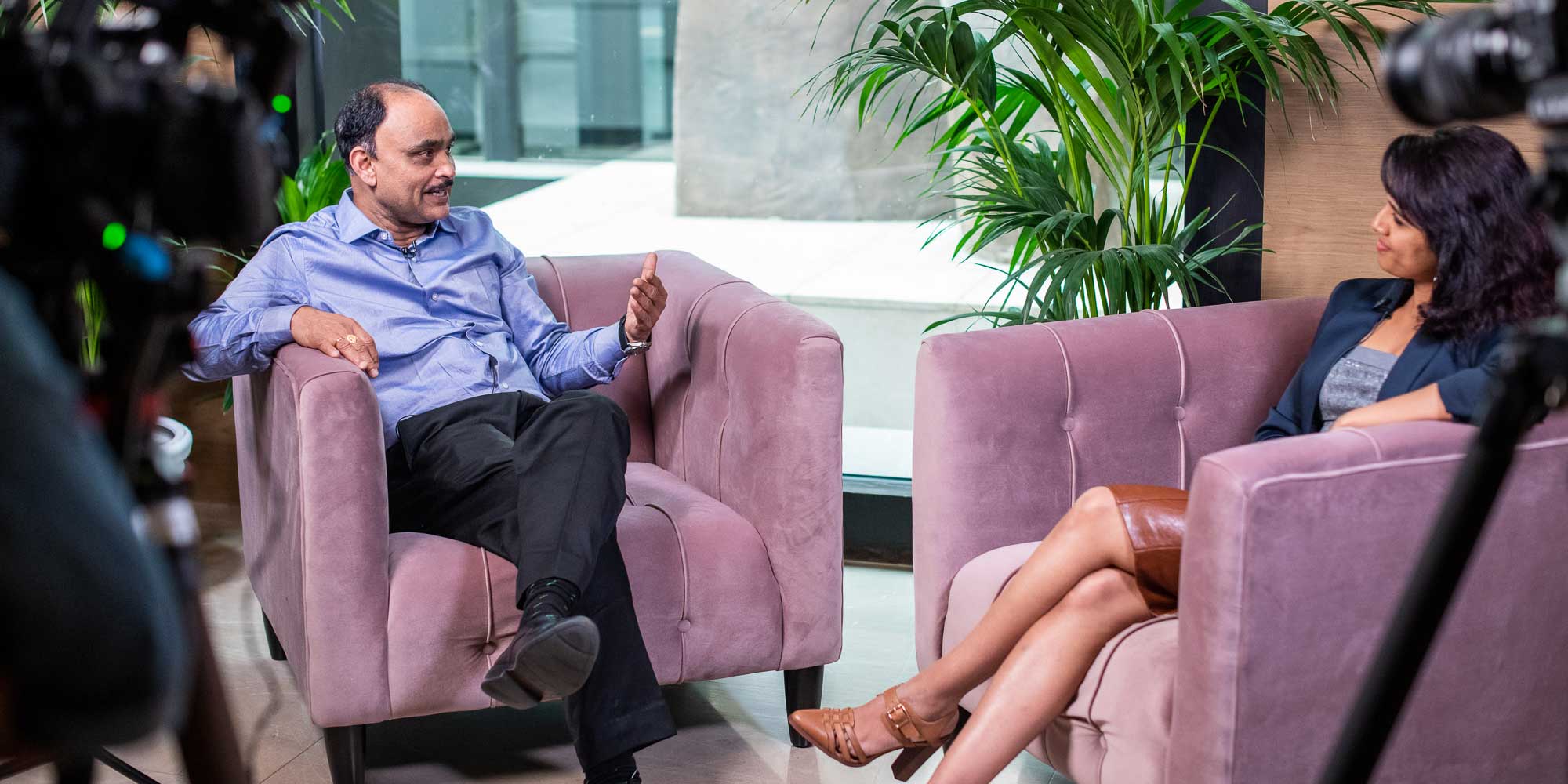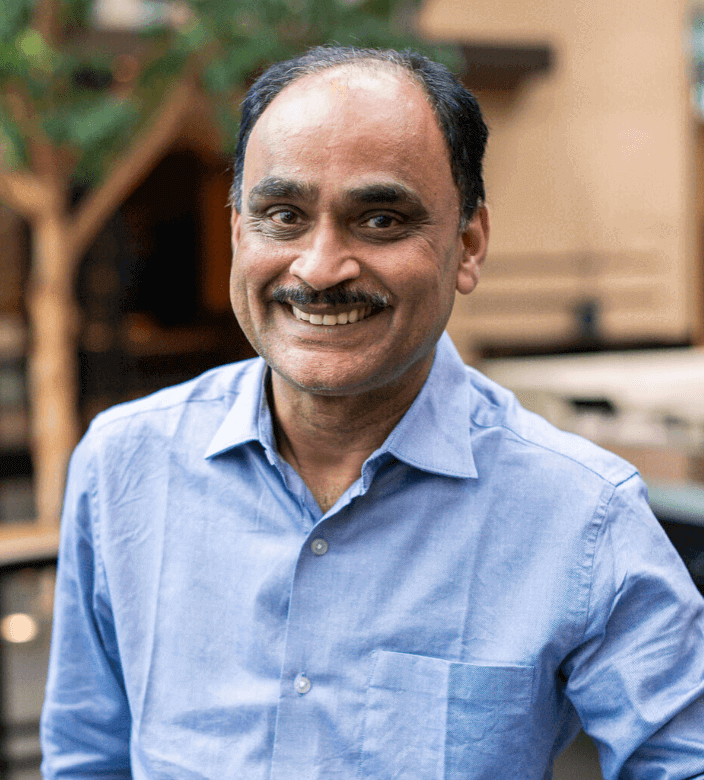Using Data Hubs, Dashboards, and Machine Learning to Execute Data-driven Strategy
Raju Varanasi shares how he’s been executing Catholic Education Office’s single most important business differentiator: its data-driven strategy. He explores how he triangulated data sets, collaborated with dashboards, and formulated new ML projects.Catholic Education Office, Diocese of Parramatta’s CIO Raju Varanasi has 25 years of experience in education, industry, public sector and not-for-profit agencies in Australia.
Speaking with ADAPT’s Senior Research Strategist Aparna Sundararajan at ADAPT’s CIO Edge, Raju shares how he’s been executing Catholic Education Office’s single most important business differentiator: its data-driven strategy. He explores how he triangulated data sets, collaborated with dashboards, and formulated new ML projects.
Aparna Sundararajan:
Welcome to the interview Raju. It would be a pleasure to hear your thoughts about one of the core competencies that we’ve come up with at ADAPT, which is called building a data-driven strategy or rather executing on a data-driven strategy. We believe that most of the organisations get the fact that they have to build one, but it’s really executing on it and creating that one connected layer of data that organisations, especially within Australia are struggling with. So, I’d like to ask you, what does it mean to you to execute on a data strategy, in the context of your role and your organisation?
Raju Varanasi:
To me, executing a single mechanism, to virtually bring all the data to enhance the user experience is the mantra for any organisation. You can have these broad sets of data, HR data, payroll data, attendance data, teacher data, training data. You can have lots of data sets, but in themselves, they don’t mean anything unless you triangulate them, you actually combine them using identifiers so that then you can start making a story. You can get some intelligence out of it. So what we did is, we created one virtual home for data. It’s a data hub basically, and because it has the identifier student, or teacher, or staff member, we now see a holistic picture. So we created a six lens approach and brought the data to drive analytics, then to insights, and then to intelligence.
So for us, the data cycle is not just capture and store and blend, but also bring out analytics, bring out the insights, socialise the insights with our executives. From there you actually can start getting intelligence, and that drives the business outcomes.
Aparna Sundararajan:
Right, so how important is it today for your business to execute on a data-driven strategy?
Raju Varanasi:
It’s probably the number one change lever for us. We know the student from a demographic profile, from performance profile, from wellbeing, from attendance, from other interactions in the learning process. But they are all captured in different ways and at different points in time. Attendance is said daily or hourly, but medical and health information once in six months or when the parent reports back a new thing whether it’s an allergy or a medical condition. So you get data coming at various points of time at various velocities, but what’s important is, am I making a holistic view of it?
I’ll give an example. In our attendance data, we found a year three child, a boy, not coming to school on Tuesdays only. We looked at the performance of the student, and the student is a high ability, quite regular the rest of the week, but not Tuesdays. This is an enigma, but there is a human story behind it. Why only on Tuesdays? We actually had to go back and enquire what’s happening in that school on Tuesday? Sports. And why is the boy not coming? Boys, generally sports is a very good part of schooling, or life, actually. We came to know that the parents could not afford sports shoes, and the boy refused to go to school because his classmates are teasing him for not wearing sports shoes. So, the principal came to know the human side of this data point. We all know of households where there are 10, 20 pairs of shoes waiting to be inaugurated.
But here is a situation where for school purposes, the parent, a single parent with three siblings and could not afford the, at that point of time she was saving up. But anyway, what we did is, we actually, the principal rang the parent and actually ordered a pair of shoes and gave them to the boy. This tells one could assume, “The boy is slack on Tuesdays.” Or “The parent has some night shift on Monday nights” or whatever it was, hence Tuesday is a hard day to drop off at school. You can make a lot of assumptions about data and even create a profile which might not be true at all. Data dispels those myths. And actually, doing some interaction based on the data, insights leading to questions, and questions leading to further insights.
That’s what we are doing and so on. So, data is actually very organic because there is a story behind each of the data points. And we are harnessing, because we are in the service industry.
Learning is as much about developing the child as about all the other aspects of pure academics.”
We take the holistic child, as a Catholic system, we would like to look at care, wellbeing, and performance on a most equal level or dimensions and that’s what we are doing with data.
Aparna Sundararajan:
Did it change the behaviour of teachers? Because they are the final milestone where the interaction happens with the students. So what did you do with that data or how do you approach this entire strategy around when you are executing the decision that has to be made on that data and for the changes that you need to bring about in the school? How do you go about those areas?

Raju Varanasi:
Very good point. I’ll give you again an example, a story about. In high school, the year seven is the first year of high school, so you get a new batch of 150 year sevens. Bright, new uniforms they come. Guess how long a teacher takes to know the 150 students? Or the group of teachers? It might take them about a term to understand, “You like sport, you like the environment, you like footy,” and so on, and maths and whatever. Guess what we have done? We took the previous profile from the primary school and gave it to the teachers on day one. On day four, Thursday, when they do the welcoming to the new batch, they already know you like cricket, you like footy, you like debating, and your literacy scores are like this, your attendance in the primary is like this. Assuming that they’re all from our primary schools. So what used to take two and a half months now takes a day. That’s how quick, how much data has changed the way we interact.
As you said, every interaction between teacher and student is where really the touchpoints of those two. That’s where the real learning is happening. We step away or step or two away can only enable that. We are not in that situation. I have never seen that boy. I’ve not seen the group of 150, but I can visualise that I’ve enabled like this in 80 old schools using data. Just understand the vibrancy that can happen when you bring data to life.
For me, data has to see the light of the day, and data has to bring vibrancy in the interaction. And it’s doing that.”
Aparna Sundararajan:
How do they get access? Are there tools which give them live feeds, or is it just a report? And two, did you face any resistance on what was, what was the receptiveness like for this data?
Raju Varanasi:
First, what we did is we published a dashboard, a set of dashboards. It’s called role-based permissions. You are a teacher in this school, school A, you can only see school A records. You’re a teacher in school B, you only can see school B records. So the dashboards are refreshed, but they only use it in the context of their learning. “Hey, why is Joe not coming?” So they can go into Joe’s attendance and then actually see patterns. “Why is Alice not doing well in maths?” They can go and see. So, in a way, they are not forced to consume every little thing. But it enables them to say there must be data there, so I can interact, in the context of their interactions. So that’s, so it’s not an overload, it’s enablement.
And in terms of, was there any resistance? No, it supplemented them. If it took two and a half months to know you as a learner, and now it takes a day or a week, we have already come quite a bit in saying that we have enabled the learning or empowered the learning space. So that’s what enthuses me in terms of providing data to my customers.
Aparna Sundararajan:
Did you communicate about the new change to them beforehand or did you do it once you figured out that this is the data strategy we need, and this is probably what the teachers needed? How did you go about that?
Raju Varanasi:
Well, my executive team, our executive director is very strong in the data culture, so when we did the analytics strategy, we unveiled it to the principals and the principals were absolutely unanimously supportive of the strategy. So once we have a minimum set of dashboards, we have what they call interactive licences for everyone. So any teacher depending on their role can see certain sets of data. And it was more pull rather than push, we didn’t have to push. We just said, when you want to look at any performance data, or demographic data, medical data, it is there. So you just do a search as you do in Google, it’s like a mini Google set on the dashboards.
If you go to Tableau I’ll show some of our dashboards. And so for them, it’s not an overload, it complimented their work. Not substituted, not on top of it, not overloaded. So that was not so much a problem. And in terms of why that is a compelling case, it is real-time, it is granular because they want just their students. I have 20 students, I want to look at them. Don’t give me 43,000 students. I don’t have time to search for them.”
No, absolutely. We didn’t expose that type of a system. So it is granular, real-time, and contextual. Contextual in the sense, I’m only looking for this. Don’t tell me all the other history. And for that too, there is a way to filter the data. So there are filters and there is a search. Between filter and search, you can find the needle in the haystack. That’s what it is. So every student can be found in our whole big system because we can search and actually then make those insights or at least ask questions leading to better insights. Which is ultimately the intelligence that we want. So it’s a connected intelligence type of situation because all schooling is about empowering the learner, providing a climate of creativity, curiosity, learning, and socio-emotional learning.
I think all those elements are there, where data can be a very big player, and we won recognition across the Australian education system and even internationally in terms of what we did, and our executive team is very strongly supportive of the strategy. And our executive director has absolutely three, has three top priorities, one of them is most probably going to be our data.
Aparna Sundararajan:
So last question, what is the way forward for you? What projects are in line in terms of executing an early data-driven strategy? You’ve accomplished so much, it feels like you’re done with.
Raju Varanasi:
No! There’s no being done with. We have just started on predictive analytics, machine learning. So many months before, we can predict possible outcomes of the learner. Assuming if the conditions are the same as in the past. Status quo, or set to this pattern of conditions. That means you have done 10 years of schooling, this is all you did in maths or English or in all areas of schooling if these attributes. So we use now predictive analytics and predicted one year ahead, the year 12 scores. With accuracy over 85%. We took 41 attributes.
So we know every student, in 41 attributes and 26 of them seem to influence differently for different students. And we now ironed out the top five if you are a recent migrant, if you are from a certain family configuration, in a single parent or whatever. And your child has been in the schooling system for so many years here, we actually can see, because the machine understands all this because we have, say, 30,000 students who did, HSC in the last 10 years.
So 30,000 students have taught us something, but as a human, I can’t actually do all that, that’s where machine learning comes into play.”
It has actually looked at all attributes, 30,000 students, 5-6 subjects, 41 attributes, and all the complexities that interplay, and the machine gave me predictive scores, which are 85% accurate with plus-minus five marks. It can be fine-tuned, but this is our first cut. So machine learning, artificial intelligence, predictive analytics, proactive intervention, so we are going into the predictive mode.
 WATCH
15:59
WATCH
15:59






























